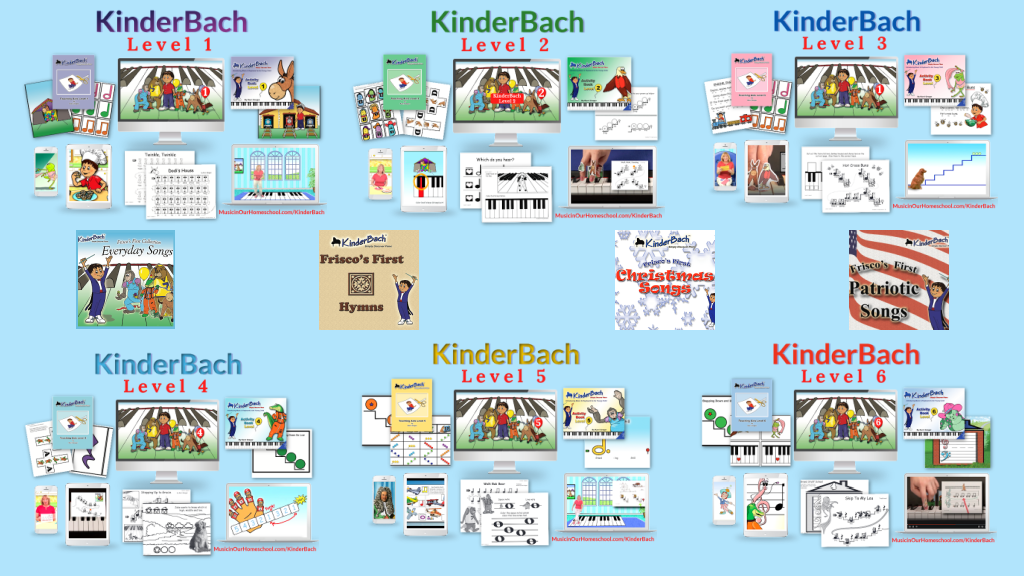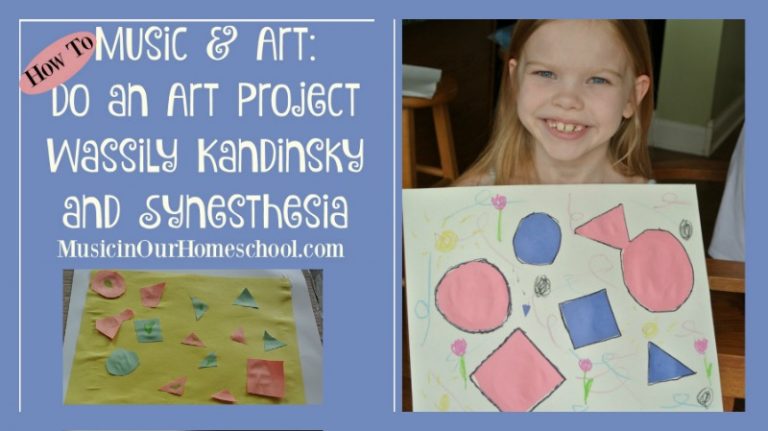Empower Your Child’s Developmental and Musical Journey: Mastering Steady Beat and 10 Exciting Ways to Practice it in Your Homeschool(E17)
Music education is a vital component of a well-rounded homeschool curriculum, and one of the foundational skills that elementary-aged children need to learn is the concept of a steady beat. Understanding and internalizing a steady beat not only aids in musical development but also enhances various cognitive and motor skills. Today, we’ll explore why learning and mastering steady beat is crucial for young learners and provide ten exciting and practical ways you can easily practice steady beat in your homeschool music lessons.

Disclosure: I get commissions for purchases made through affiliate links in this post.
Why Learn Steady Beat?
Why should kids learn and master steady beat, and what exactly is it? A steady beat is the consistent, underlying pulse beneath most music. It’s what you tap your foot to when you listen to a song. It’s essential because performed songs must be played or sung with a steady beat. It allows musicians to stay together and enhances the enjoyment for the listener.
It can take time and practice, though, to get good at keeping a steady beat. And, just like many skills, starting early is helpful. For children, learning to recognize and maintain a steady beat offers several significant benefits in addition to the obvious one of gaining a fundamental musical skill for any future music endeavors. Without mastering steady beat, children may struggle with more complex musical concepts and instruments later on.

Here are Four Other Benefits of Learning Steady Beat
Improved Coordination and Motor Skills:
Practicing a steady beat with the various activities listed below helps children develop better hand-eye coordination, fine motor skills, and gross motor skills. These activities require synchronization of movement, which strengthens their overall motor abilities, including crossing the midline, which is the imaginary line that divides the body into left and right halves. When children engage in activities that involve keeping a steady beat, they are often using both sides of their body and brain simultaneously. This bilateral coordination is crucial for overall development.
Crossing the midline is a critical developmental skill that allows the brain’s hemispheres to communicate more effectively. It enhances a child’s ability to perform tasks that require the use of both sides of the body, such as tying shoes, writing, and reading. For example, when a child claps to a rhythm or pats their knees in time with music, they are engaging both their left and right hands, encouraging cross-body movements. This action stimulates brain development, improving neural connectivity and coordination.
Furthermore, activities like marching to the beat or swaying from side to side not only promote gross motor skills but also help in building core strength and balance. These physical movements support the development of muscle memory and spatial awareness, which are essential for various everyday activities and academic tasks.
Fine motor skills are honed through actions like patting, clapping, and playing rhythm sticks, which require precise hand and finger movements. These skills are foundational for writing, drawing, and other tasks that demand manual dexterity.
By incorporating steady beat practice into your homeschool music lessons, you provide a fun and effective way for children to enhance their motor skills, which are crucial for their overall physical development and daily functioning.

Enhanced Reading Skills:
Research has shown that children who can keep a steady beat have better reading fluency. The rhythm and timing involved in reading are closely related to musical beats, making this skill transferable to literacy. When children practice maintaining a steady beat, they develop a sense of timing and rhythm that directly influences their ability to read smoothly and accurately. This rhythmic awareness helps them grasp the natural flow and cadence of language as well.
Reading fluency involves the ability to read text quickly, accurately, and with proper expression. It requires the coordination of several cognitive processes, including decoding, comprehension, and word recognition. Children who can keep a steady beat often exhibit stronger phonological awareness, which is the ability to recognize and manipulate the sounds in spoken language. This skill is foundational for understanding the relationship between sounds and letters, a critical aspect of reading.
Additionally, the rhythmic patterns in music mimic the prosody of speech—which means the rise and fall of intonation, the stress on certain syllables, and the pauses between phrase. When children practice keeping a steady beat, they become more attuned to these patterns, which helps them read with better expression and intonation.
Furthermore, the discipline of maintaining a steady beat also improves a child’s attention span and concentration. These cognitive benefits translate to better focus and endurance during reading tasks, allowing children to sustain their attention over longer passages and complex texts.
The synchronization of movement and rhythm in beat-keeping activities fosters neural connections that support the integration of auditory and visual information, further strengthening reading skills. By incorporating beat-keeping exercises into your homeschool music lessons, you are not only nurturing their musical abilities but also providing a strong foundation for their literacy development.

Cognitive Development:
Learning and practicing a steady beat enhances brain function in multiple profound ways. It involves auditory discrimination, pattern recognition, and memory, all of which contribute significantly to cognitive development. When children engage in activities that require them to maintain a steady beat, they are essentially training their brains to process and interpret various types of sensory information efficiently.
Auditory discrimination is the ability to recognize and differentiate between different sounds. When children practice a steady beat, they learn to distinguish subtle differences in timing, rhythm, and tempo. This skill is crucial not only for music but also for language development, as it helps children detect phonetic variations in speech, such as the difference between similar-sounding words. Enhanced auditory discrimination supports better listening skills, which are essential for following directions, understanding spoken information, and engaging in effective communication.
Pattern recognition is another critical cognitive skill that is sharpened through steady-beat practice. Music is inherently structured around patterns—repeated sequences of notes, rhythms, and beats. By learning to identify and replicate these patterns, children develop their ability to recognize and predict sequences, a skill transferable to many other areas of learning. For example, mathematical concepts such as sequencing, counting, and problem-solving are all rooted in pattern recognition. This ability to discern patterns also aids in the understanding of complex systems and the organization of information in a coherent manner.
Memory is deeply involved in the process of maintaining a steady beat. Children must remember the rhythm and timing of beats over a period of time, which exercises both their short-term and long-term memory. This memorization process helps to strengthen neural connections in the brain, enhancing overall memory capacity and retention. Improved memory supports academic learning across subjects, as children are better able to recall facts, procedures, and concepts.
Furthermore, the act of keeping a steady beat requires synchronization of motor actions with auditory cues, which promotes the integration of sensory and motor pathways in the brain. This integration is crucial for the development of fine and gross motor skills, as well as for the coordination of complex movements. The ability to synchronize movements to a beat also fosters a sense of timing and coordination that is beneficial in physical activities and sports.

Improved Social Skills:
Many steady-beat activities are group-based, providing an excellent opportunity for children to develop essential social skills. Participating in these activities fosters a sense of teamwork, as children must work together to maintain a consistent rhythm. This collaboration requires clear communication and mutual understanding, helping children learn how to express themselves and listen to others effectively.
One of the key social skills developed through group-based steady-beat activities is teamwork. When children engage in musical activities together, they learn to coordinate their actions with those of their peers. This cooperation is crucial for achieving a harmonious outcome, whether they are playing instruments in an ensemble or clapping in unison. By working towards a common goal, children experience the value of collective effort and learn that the success of the group depends on the contribution of each member. Learning to take turns is another vital social skill that is enhanced through steady-beat activities. In many musical exercises, children must wait for their turn to play an instrument, clap, or perform a movement.
Cooperation is another significant social skill developed through group-based steady-beat activities. Children must listen to each other and synchronize their actions to maintain a cohesive rhythm. This cooperation encourages them to be aware of their peers’ contributions and adjust their actions accordingly. It also fosters a sense of empathy, as children learn to support each other and work together harmoniously.
Additionally, these activities often involve elements of leadership and followership. At times, children may take on the role of leading a group activity, setting the pace, and guiding their peers. In other instances, they must follow the lead of others, which teaches them flexibility and adaptability. This balance of leading and following helps children understand different social roles and develop respect for authority and peer contributions.

10 Ways Toward Mastering Steady Beat in Your Homeschool Music Lessons
Incorporating steady beat practice into your homeschool music curriculum can be both fun and effective. Here are ten ways to help your elementary-aged kids in your goal of mastering steady beat:
March to the Beat:
Have your children march around the room to the beat of a song like “Stars and Stripes Forever” by John Philip Sousa or “The Ants Go Marching In”. Encourage them to lift their knees and step to the beat. This not only helps with rhythm but also with their gross motor skills.
Clap to the Rhythm:
Choose a favorite song like “If You’re Happy and You Know It.” Play the song and have the children clap their hands on each beat. Start with simple songs and gradually move to more complex rhythms.
Pat the Steady Beat:
Children can sit and pat their knees or on a table in time with the music. Songs like “Twinkle, Twinkle, Little Star” or “Row, Row, Row Your Boat” work well. This helps with understanding the physical sensation of keeping a beat.
Use Rhythm Sticks:
Provide each child with a pair of rhythm sticks. Tap the sticks together or on the floor to match the beat of songs like “The Wheels on the Bus” or “B-I-N-G-O”. This is a fun way to incorporate percussion into your lessons.
Play a Drum:
Give each child a small drum or makeshift drum (like a pot and spoon). Have them play along to the beat of songs like “Happy” by Pharrell Williams. Emphasize strong, consistent strikes to maintain the beat.
Rock a Doll or Stuffed Animal:
While listening to a lullaby, like “Hush Little Baby” or “Rock-a-Bye Baby”, have the children rock their doll or stuffed animal back and forth to the beat. This creates a calming association with the rhythm.
Chant with a Steady Beat:
Recite a rhyme or poem to a steady beat. Try chants like “Engine, Engine Number Nine,” “Miss Mary Mack,” or the one I wrote called “The Workshop Chant.” Clap, pat, or use rhythm sticks to keep a steady beat while chanting. This helps integrate language and rhythm.
Sway to the Music:
Play a song like “Edelweiss” from The Sound of Music or “Lean on Me” by Bill Withers. Encourage the children to sway from side to side in time with the music. This movement helps them feel the beat throughout their bodies.
Jump Rope to a Song:
Play a song like “A Sailor Went to Sea, Sea, Sea” or “Teddy Bear, Teddy Bear.” Have the children jump rope, timing their jumps to the beat of the music. This is a great way to combine physical exercise with rhythm practice.
Play a Passing Game
Sit in a circle and pass a beanbag or small ball around in time with the music. Try a song like “Pass the Beanbag”. This helps with coordination and rhythm as they maintain a steady beat while passing the object. And, this particular version of the song changes tempos, so it encourages the children to listen intently to keep passing with the correct rhythm.
Mastering Steady Beat Conclusion
Incorporating steady beat activities into your homeschool music curriculum is a great way to enhance both musical development and various cognitive, motor, and social skills. These ten fun and engaging activities, including marching, drumming, clapping, and swaying, can help your elementary-aged in mastering steady beat and building a solid foundation for their future musical endeavors. Consider making these activities a regular part of your homeschool routine–even add one this week!
Helpful Steady Beat Resources:
See the YouTube Video “Empower Your Child’s Developmental and Musical Journey: Mastering Steady Beat and 10 Exciting Ways to Practice it in Your Homeschool” here:
Listen to the Podcast Episode about “Empower Your Child’s Developmental and Musical Journey: Mastering Steady Beat and 10 Exciting Ways to Practice it in Your Homeschool” here:
Listen here or subscribe and follow The Music in Our Homeschool Podcast through your favorite podcast app!
Read the Podcast Transcript here.












